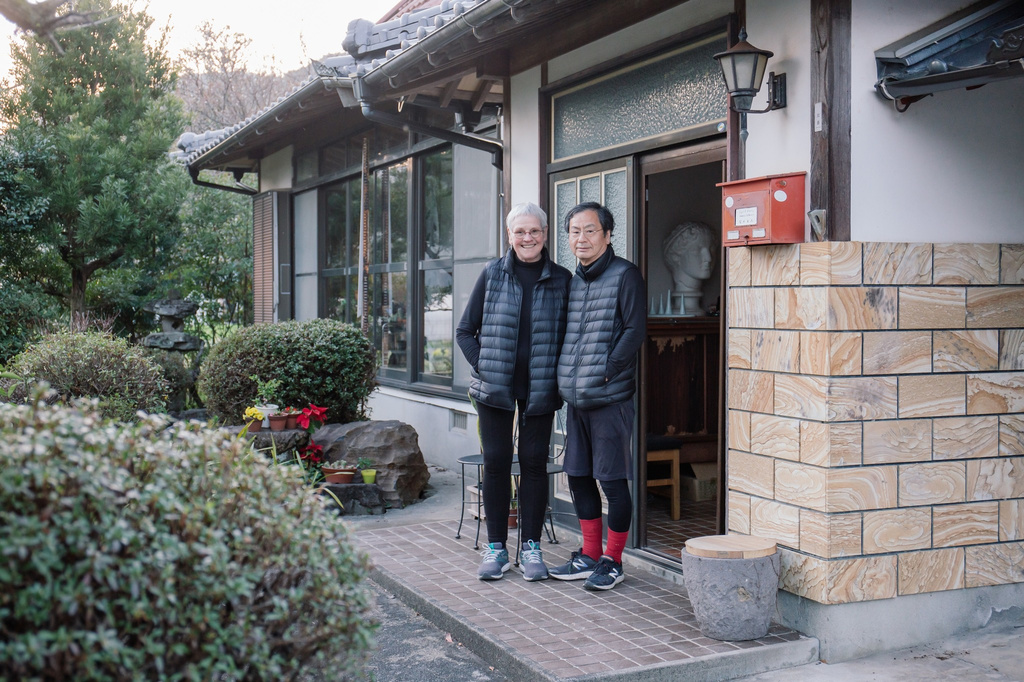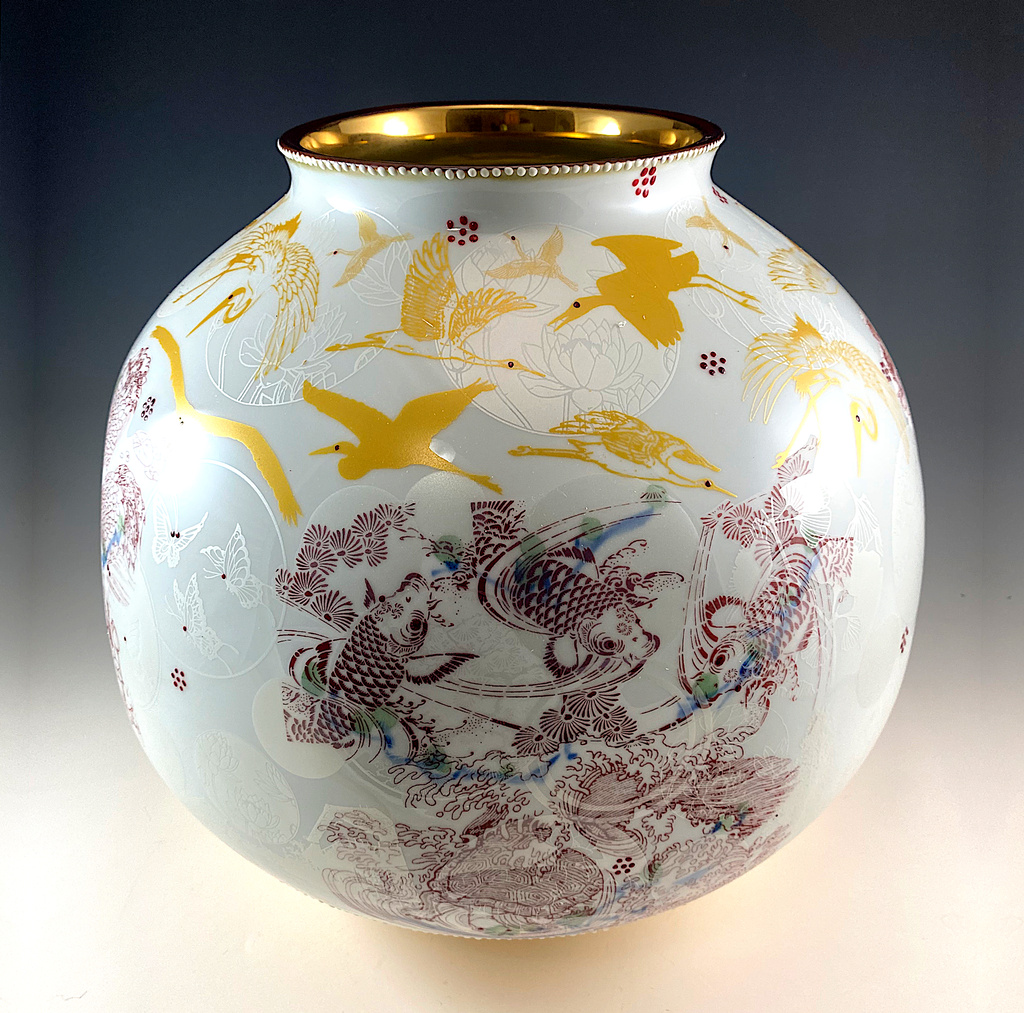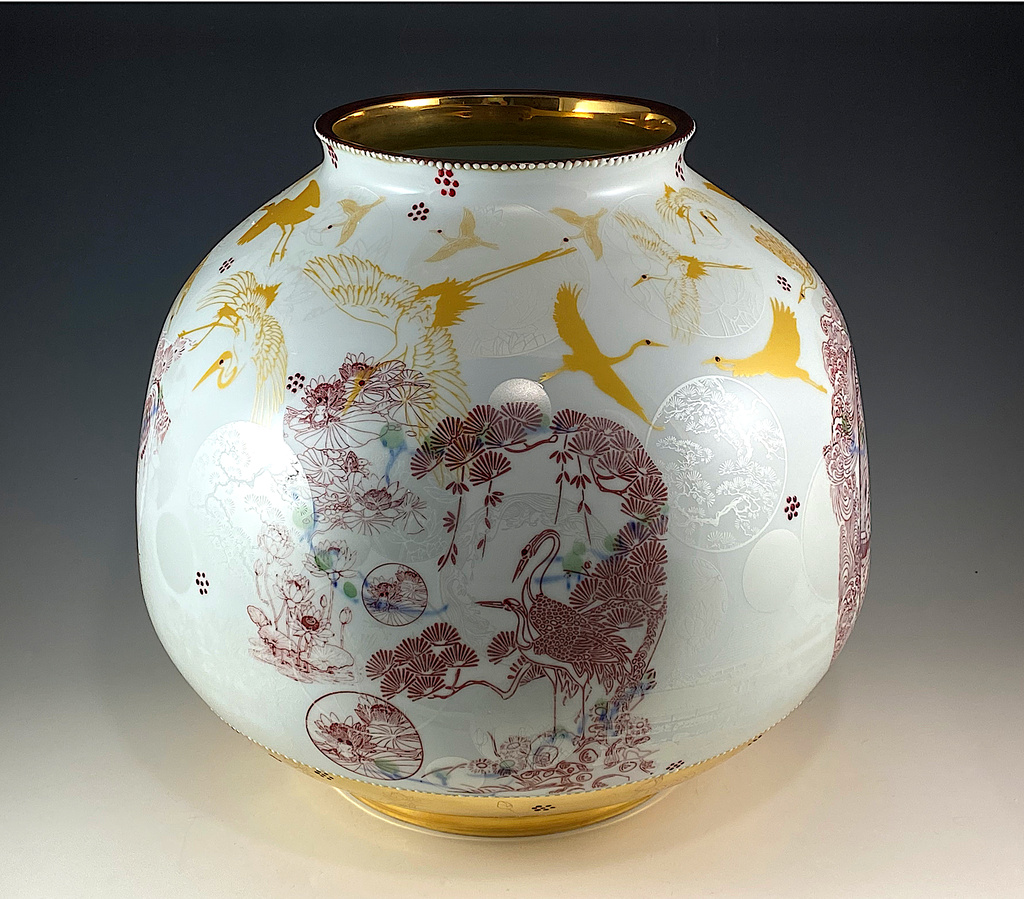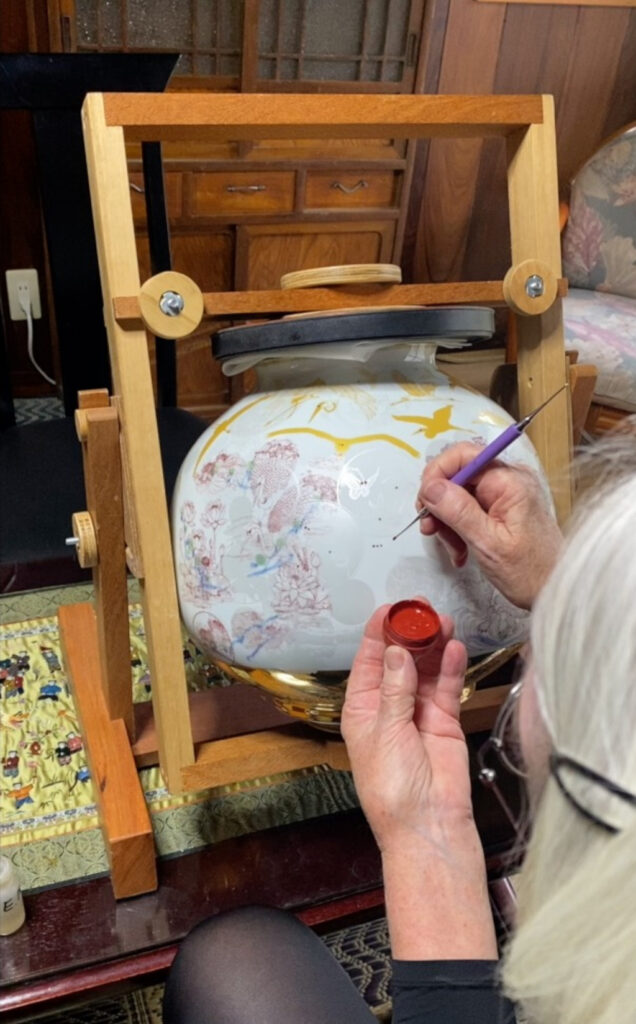- Ukiyo. ht30.5cm x 34cm x 34cm, Amakusa Porcelain, celadon, 1280.c reduction, multiple firings 830.c, gold, laser decals, bespoke screen printed and commercial decals, raised enamel.
- Ukiyo. ht30.5cm x 34cm x 34cm, Amakusa Porcelain, celadon, 1280.c reduction, multiple firings 830.c, gold, laser decals, bespoke screen printed and commercial decals, raised enamel.
- Ukiyo. ht30.5cm x 34cm x 34cm, Amakusa Porcelain, celadon, 1280.c reduction, multiple firings 830.c, gold, laser decals, bespoke screen printed and commercial decals, raised enamel.
Our August laurel goes to Johanna De Maine and Tatsuya Tsutsui for the sublime floating world of “Ukiyo”.
Ukiyo is a collaboration with my partner Tatsuya Tsutsui. Tatsuya made the form. He is a master porcelain artist trained in Arita by the late Manji Inoue, a Living National Treasure. I contributed the overglaze decoration. The general concept behind this piece deals with water and floating.
The piece had a total of 14 firings, 12 being in the overglaze kiln to 830 °C. With this piece, I focused on collaging self-printed laser decals, my bespoke screen-printed decals and commercial decals. Using the raised enamel for eyes and flowers, as well as delineating areas within the design, has been pure meditation. I am totally in the moment during this process.
The name of this piece, “Ukiyo”, translates as floating/fleeting/transient world. In its modern usage, the term Ukiyo is used to refer to a state of mind emphasising living in the moment, detached from the difficulties of life.
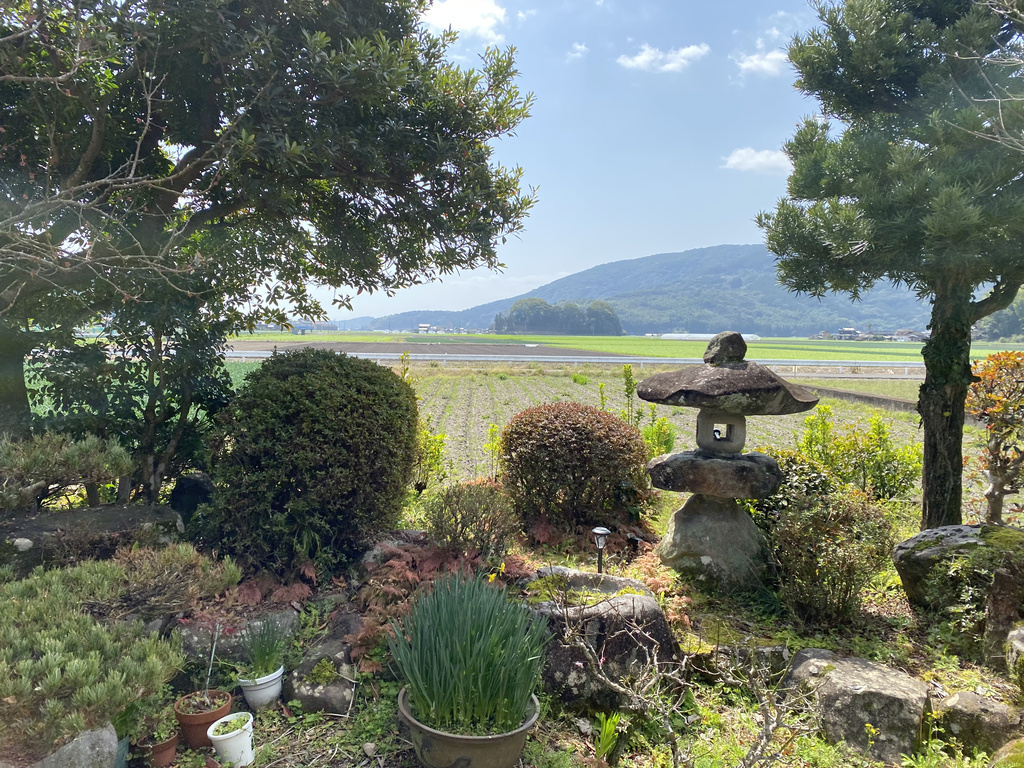
This piece was entirely conceived and finished in Saga Prefecture, North West Kyushu, close to the porcelain capital of Arita, where porcelain stone was first discovered in 1616 at Izumiyama.
We live in Morai, a small village in the Rokkaku valley near Shiroishi-Cho, Tatsuya’s birthplace. Our house is an old kayabuki (thatched roof) farmhouse. We are surrounded on three sides by a patchwork of fields which changes its character with every seasonal planting. This can be for rice, wheat, onions, soya beans, cabbages or lotus. The colours and textures are constantly changing. The fields are delineated by irrigation canals. At the back of our house, across the street that is lined with more houses, rise the bamboo and forested mountains.
We have set up a small studio in the garage where we also have our 3-phase electric kiln that we use for bisque and overglaze. Everything (except the kiln) is on wheels so that everything can be shifted to one side for our car to be parked inside when we return to Australia for summer and winter. Spring and Autumn are spent in Japan. We are very much part of the local community here.
